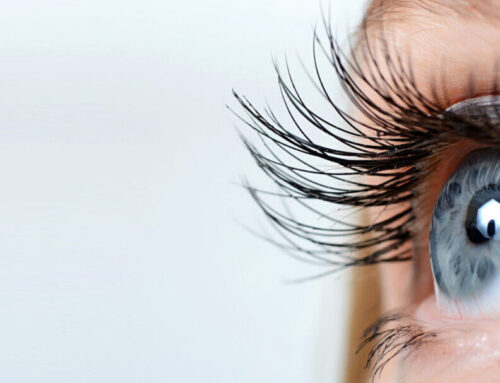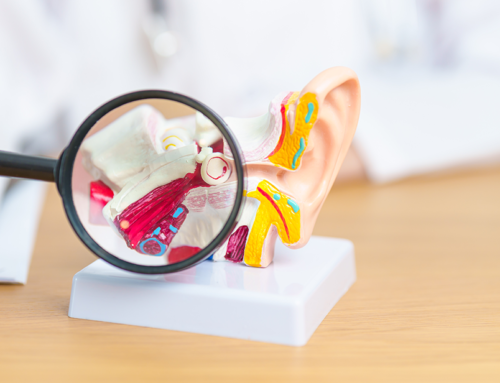Various hearing solutions in comparison
For people with single-sided deafness various hearing solutions are available. The results from a study of the Upper Austrian Hospital Wels-Grieskirchen may help you make a choice.

Current studies demonstrate that communication abilities of people with profound hearing loss in one ear (“single-sided deafness”) are poorer than expected. The lack of directional hearing and limited speech understanding in noise are considered the strongest impairments, followed by a limited spatial orientation. Studies have also shown that patients with single sided deafness (short: SSD) feel considerable restraints in their professional life. Even using the telephone with the normal hearing ear might constitute a problem for them.
Choosing the ideal seating position in a meeting or classroom is the first step towards alleviating these challenges, as is the use of various assistive listening and communication devices[1]. For a permanent solution, getting an adequate technical hearing device should be considered. For candidates with single-sided deafness, CROS hearing aids, conventional hearing aids and bone conduction hearing implants, as well as cochlear implants are available.
CROS – Contralateral Routing of Signal
CROS is the combination of a hearing aid in the deaf ear which picks up sound on this side and a second hearing aid which transmits sound on to the hearing ear. Sound can be transmitted via glasses or – thanks to modern technology – wireless. This solution provides users with all the sound coming into the deaf ear. However, they cannot localize where sound is coming from. Speech understanding in noise is varied and depends on the individual situation: if the conversation partner is next to the deaf ear, he or she may be heard better. If the conversation partner is next to the hearing ear but noise is coming in from the deaf side, understanding will be compromised with the CROS solution.
Users often miss the positive benefits of this solution. Particularly children often don’t accept having to wear hearing aids in both ears.[2] Bone-conduction systems are the further development of CROS systems.
Using bone conduction for SSD
A bone conduction system is worn in the deaf ear where it picks up sound, converts it into vibrations and delivers them to the temporal bone of the skull. The skull forwards sound to the functioning ear on the opposite side of the head. Bone conduction systems can be grouped into special hearing aids and bone-anchored hearing implants. Both systems have their pros and cons.
In general, this solution works by transmitting the audio signal to the hearing inner ear, simulating the CROS effect, but with only one hearing device. Users report improved hearing, even though they cannot benefit from binaural hearing: This is because all the sound coming in is bundled up to be presented to one side only.
Cochlear implant for full hearing restoration in SSD

The quality of life improves significantly for unilaterally deaf people with a hearing implant. ©MED-EL
A cochlear implant (CI) bypasses the non-functioning inner ear and stimulates the neuronal structures of the hearing nerve directly. To fully benefit from a cochlear implant, hearing rehabilitation and, for children, an early auditory training with a speech-language therapist are recommended.
For CI users with single-sided deafness, it may take a little longer until their central hearing is able to correctly understand the sound signal. This is due to the fact that the hearing ear took over all the hearing work. In people with a long duration of single-sided deafness the cortical areas of the brain[3] might have reorganised. This may prolongue the hearing rehabilitation process. If binaural abilities were not present before the onset of deafness, special exercises for sound localisation and speech understanding in noise are recommended. The cochlear implant’s big advantage over systems using bone conduction is its ability to electronically restore hearing abilities in the deaf ear, thereby providing the basis for full binaural hearing.
Systems comparison – the first study
In a 2015 study, experts at the ENT Clinic in Wels-Grieskirchen (Austria), headed by chief physician Thomas Georg Keintzel[4], compared patients with single-sided deafness using a CI with SSD patients using the semi-implantable bone-anchored BONEBRIDGE hearing implant. Patients were tested for speech understanding in noise and sound localisation. In addition, subjective improvements of their quality of life with the implant were assessed in a special questionnaire.
Results showed that users of both systems benefitted from improved speech understanding in noise and an increased quality of life with their hearing implants. The study saw a marked difference in directional hearing. Users with cochlear implant scored significantly higher than the group with bone-anchored hearing implants. Both groups reported a clearly improved quality of life.
Hearing solutions: clinical experience
When choosing an implant system for a patient, Thomas Keintzel recommends to assess whether the aim is “to just improve speech understanding in noise or aim for directional hearing and spatial orientation as well.”
Success with a Bonebridge implant for SSD users requires good hearing in the contralateral ear. A low rehabilitation effort and a clear improvement of speech understanding in noise are arguments for the Bonebridge and limited directional hearing speaks against it.
Thomas Keintzel explains: “To reach success with a cochlear implant in SSD, the onset of deafness should not be longer than ten years ago. Patients must be determined to do rehab and need to have realistic expectations. If they accept these criteria, SSD patients with a CI will likely see clear improvements in terms of speech understanding in loud surroundings. Furthermore, they may get their directional hearing back and benefit from improved spatial orientation.
[1] Lieu J. E. C., Management of Children with Unilateral Hearing Loss, Otolaryngol Clin N Am, 2015, http://dx.doi.org/10.1016/j.otc.2015.07.006.
[2] like1
[3] See Research for good hearing, implantable hearing systems – interview with Prof. Dr. Andrej Kral, taken from: Schnecke, edition 82, p. 11f, December 2013
[4] See Article in hear to read, special edition April 2015, p. 30ff.






